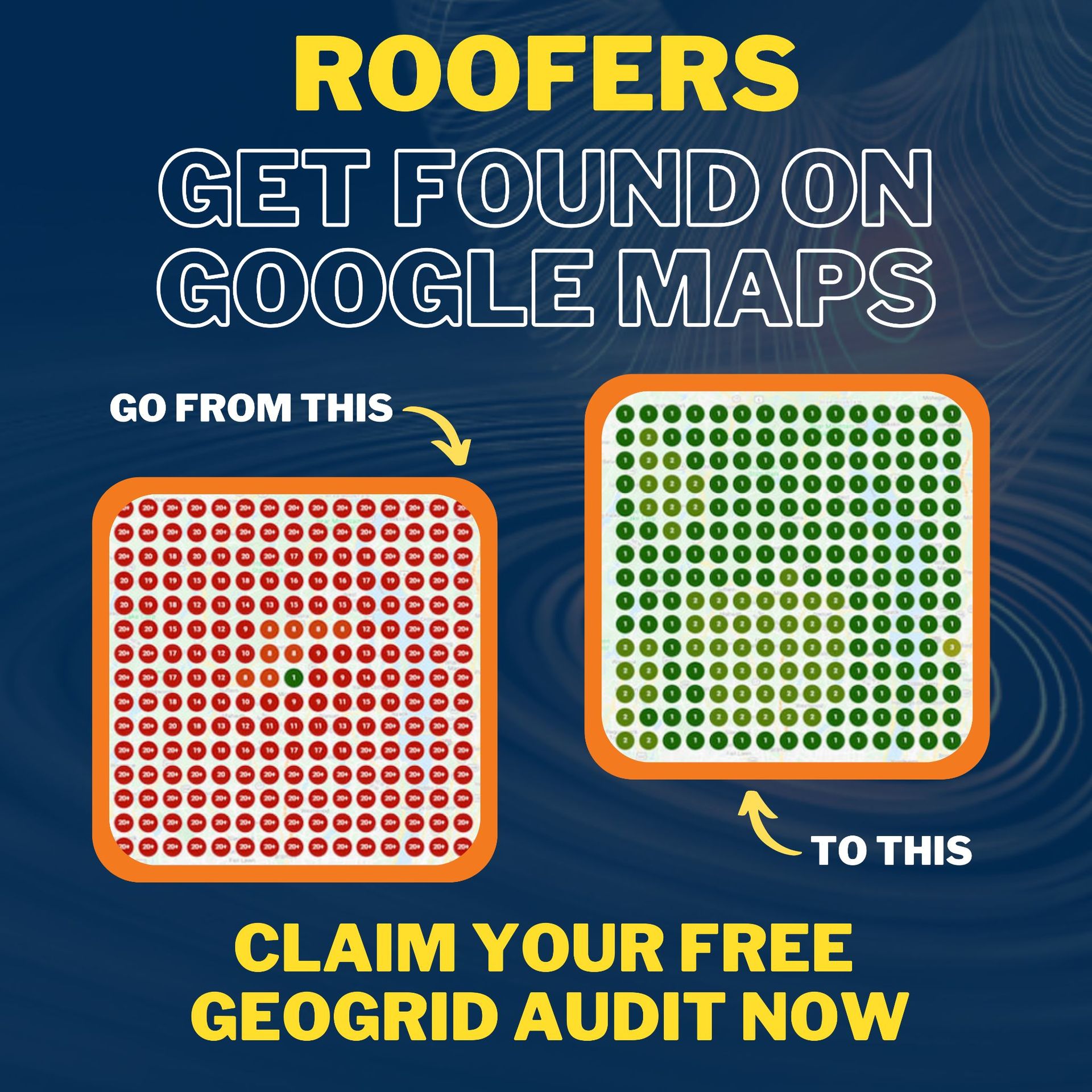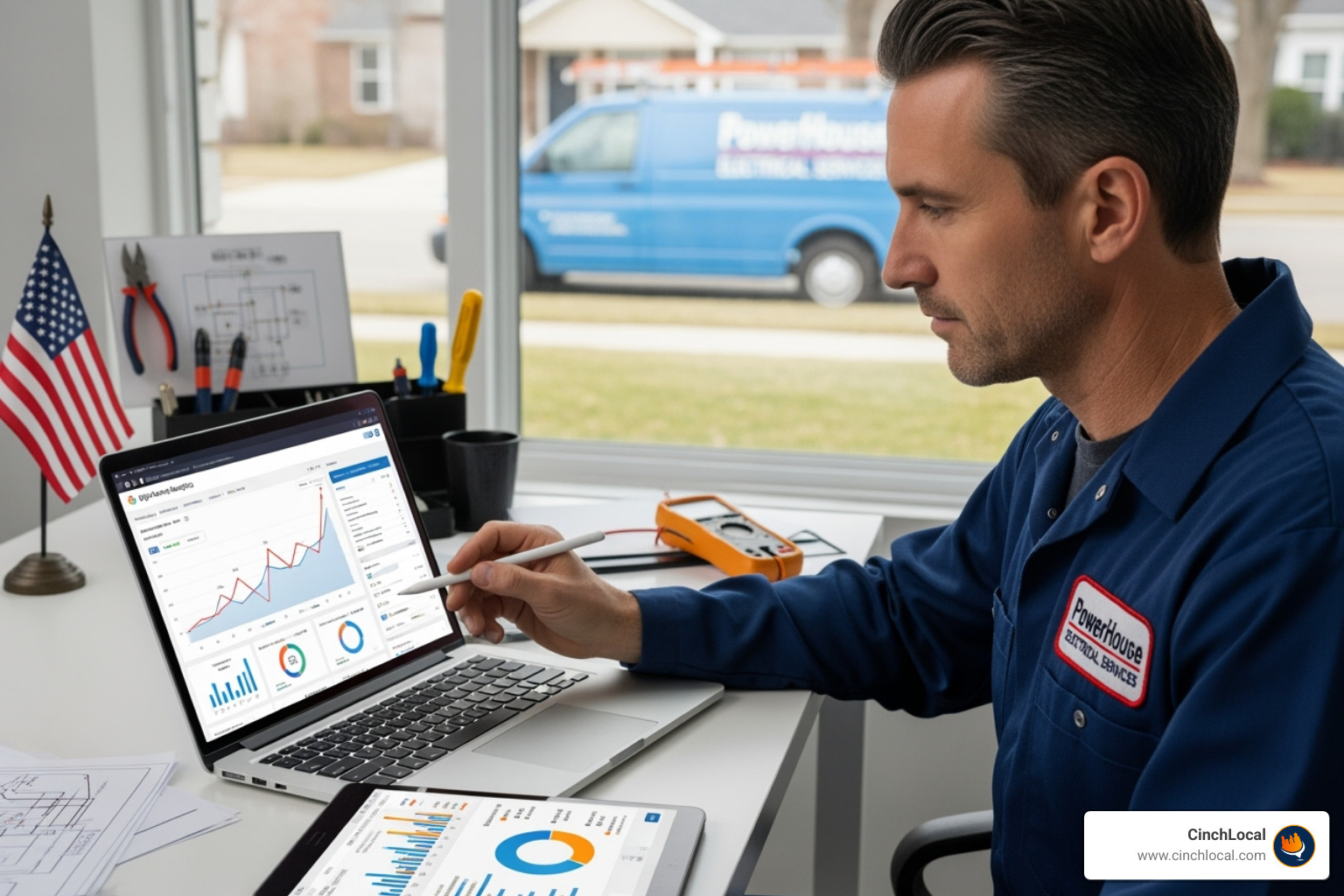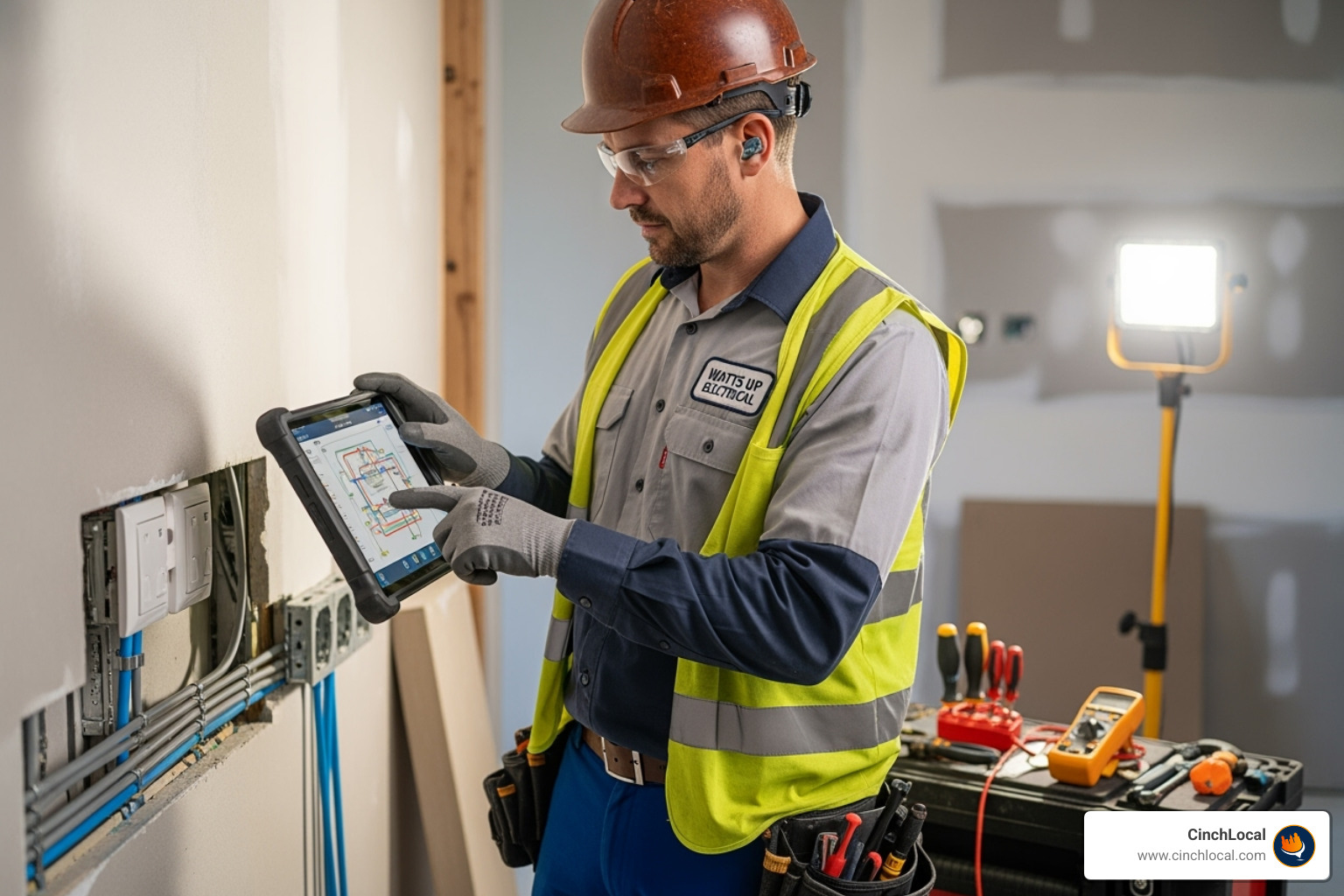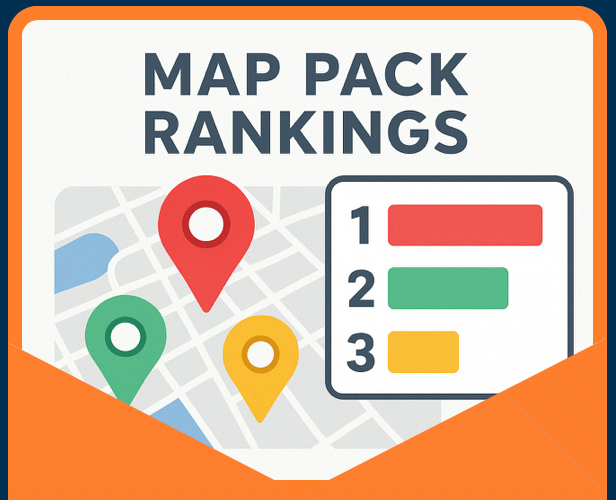
Cary Byrd // Founder of CinchLocal
Climb the Local Ladder: Ranking Higher on Google Maps
Why Your Business Needs to Be on the Map

Rank higher Google Maps isn't just marketing jargon - it's the difference between thriving and surviving for local businesses. When 46% of all Google searches have local intent and 78% of mobile local searches result in an offline purchase, your visibility on Google Maps directly impacts your bottom line. For local businesses, this is where proven local SEO strategies make all the difference. At CinchLocal, we see this reality play out daily for our clients across Ohio, Tennessee, Georgia, and California.
To rank higher on Google Maps, focus on these essential strategies:
- Claim and optimize your Google Business Profile - Complete every section with accurate information
- Gather positive customer reviews - They're a top ranking factor for local search
- Ensure NAP consistency - Keep your Name, Address, and Phone number identical across all platforms
- Build local citations - Get listed in relevant local directories
- Create location-specific content - Target local keywords on your website
- Engage with customers - Respond to reviews and post regular updates
Google Maps has become the digital storefront for local businesses. The top three listings in the Map Pack receive the majority of clicks, making effective local SEO strategies crucial for contractors and service providers who need steady lead flow.
For roofing contractors especially, ranking in the local Map Pack means capturing customers at the exact moment they need emergency repairs or planned installations. When someone searches "roofers near me" during a storm or after hail damage, being visible can mean the difference between a $10,000 job and watching it go to a competitor.
I'm Cary Byrd, CEO and founder of CinchLocal, where I've spent over a decade helping roofing contractors rank higher Google Maps through proven local SEO strategies. My experience building and scaling online visibility for service-area businesses has shown me exactly what works - and what wastes time and money.
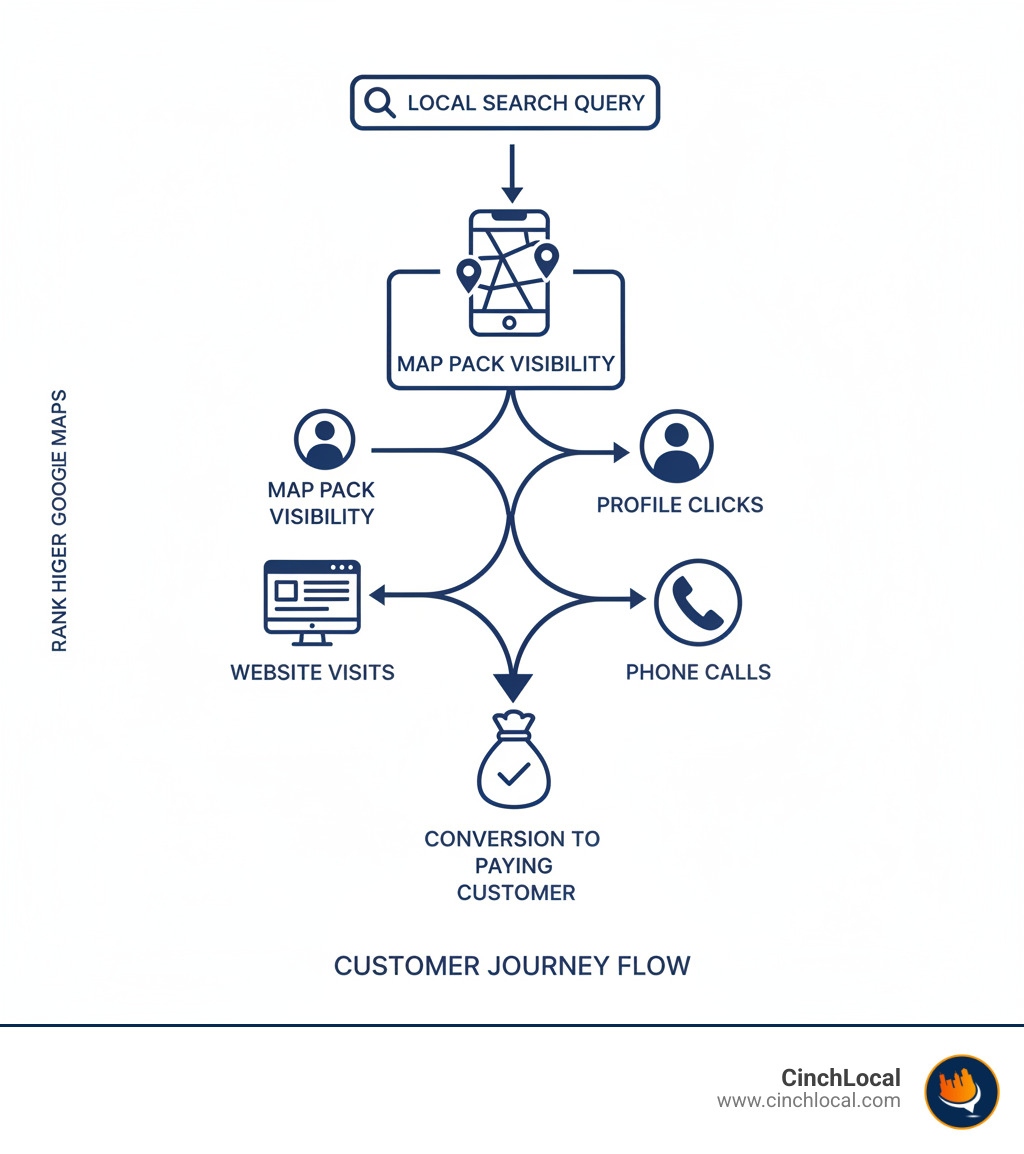
Understanding Google's Local Ranking Algorithm
Think of Google's local ranking system as a matchmaker - it's constantly trying to pair searchers with the perfect business for their needs. While the algorithm might seem like a black box, it's actually built on three fundamental pillars that determine who gets those coveted spots when people want to rank higher Google Maps .
Relevance is Google's way of asking, "Does this business actually match what the person is searching for?" When someone types "emergency roof repair," Google scans your Google Business Profile to see if you're actually a roofing contractor, not a pizza place. The more complete and detailed your profile, the better Google understands exactly what services you offer. This is why comprehensive local SEO strategies focus heavily on profile optimization from day one.
Distance might seem obvious, but it's become increasingly powerful since Google's Vicinity update in December 2021. Google calculates how far each business is from either the location mentioned in the search or the searcher's current position. Here's the kicker - sometimes a business with a barely-filled profile can still appear in the Map Pack simply because they're the closest option. Distance has become such a strong factor that it can sometimes override other ranking signals.
Prominence is where things get interesting. This isn't just about having a website - it's about how well-known your business is both online and in the real world. Google looks at your organic search rankings, the quality and quantity of your reviews, backlinks from other websites, and mentions in local directories and news articles. Think of it as your business's overall reputation score across the entire internet.
These three factors work together in ways that can sometimes surprise even experienced marketers. A business might have perfect relevance and decent prominence but lose out to a closer competitor. Understanding this balance is crucial for anyone serious about improving their local search performance.
The beauty of Google's system is that you can't simply pay your way to the top of organic local results. Every improvement has to be earned through legitimate optimization efforts. For detailed guidance straight from Google, check out their official resource on how to improve your local ranking on Google.
Recent algorithm updates have shifted the importance of these factors, making it more critical than ever to have a comprehensive approach. Our team has documented these changes extensively in our guide on Mastering the Google Map Pack: A Comprehensive SEO Guide , which breaks down exactly how these ranking factors play out in real-world scenarios.
The key takeaway? Google's local algorithm rewards businesses that provide clear, consistent information while building genuine authority in their community. It's not about gaming the system - it's about becoming the obvious choice for local customers.
The Foundation: Claiming and Optimizing Your Google Business Profile
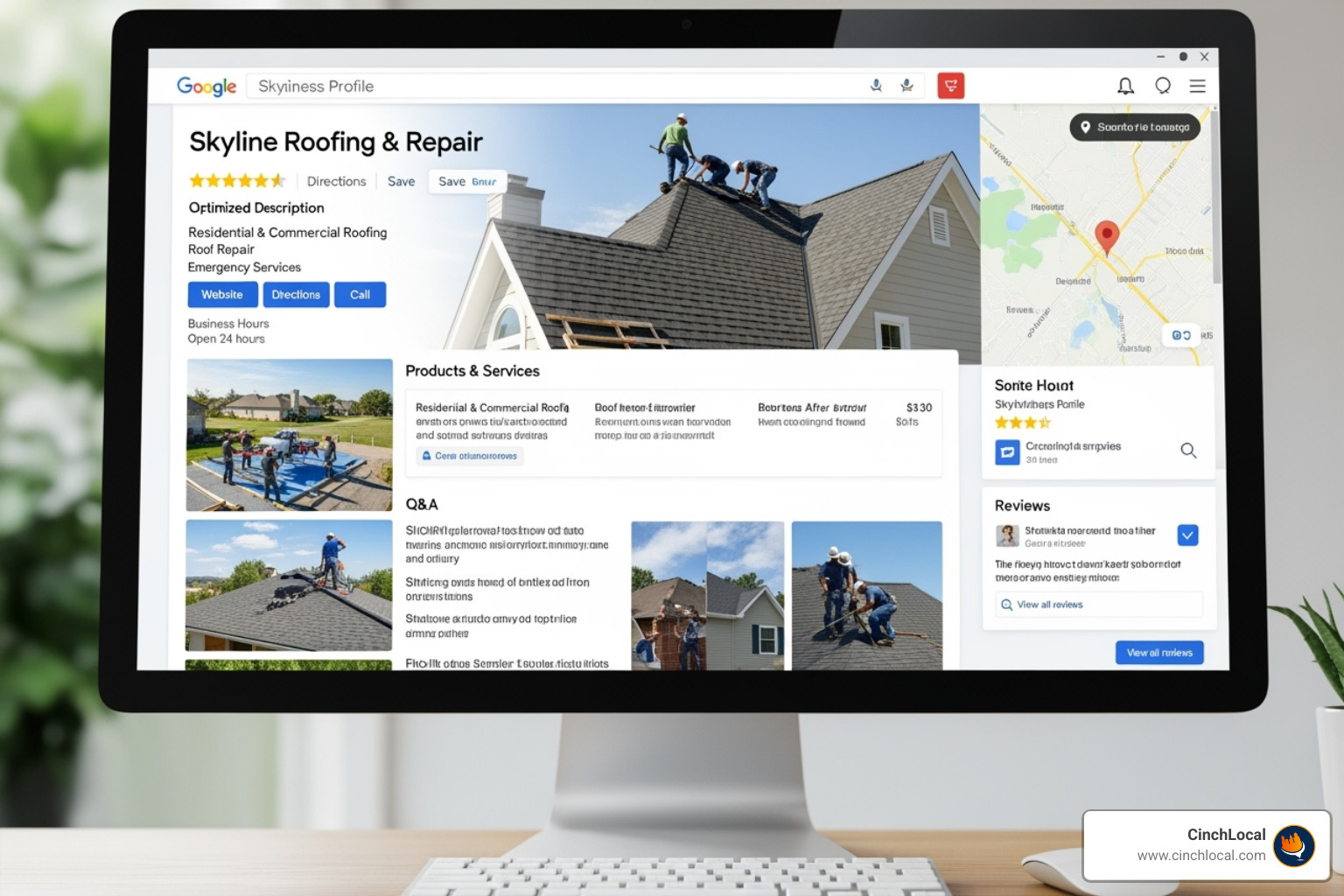
Your Google Business Profile (GBP) is like your business's digital storefront - except this one never closes and gets more foot traffic than Times Square. It's where Google gathers all the information it needs to decide whether your roofing business deserves that coveted spot in the Map Pack. Think of it as mission control for your local online presence.
Here's something many contractors don't realize: claiming and verifying your GBP is absolutely essential because it gives you complete control over how your business appears on Google. Without verification, you're basically letting strangers describe your business to potential customers. Not exactly a winning strategy.
The difference between claiming and creating a profile comes down to whether Google already knows you exist. If your business already appears on Google Maps (maybe a customer added it or Google created it automatically), you'll need to claim it. If you're completely new to Google's radar, you'll create one from scratch. Either way, your goal is the same: 100% profile completion is your ticket to better visibility.
Your GBP serves as your local SEO control center, and here's a stat that'll make you pay attention: businesses that regularly update their profiles are twice as likely to rank higher Google Maps . That's not a small advantage - that's game-changing.
Step 1: Complete Your Profile with Precision
Getting your profile details right isn't just about looking professional - it's about speaking Google's language fluently. Every field you complete gives Google another piece of the puzzle to understand exactly what your business offers and where it serves customers.
Business name guidelines and NAP consistency might sound boring, but they're absolutely critical. Your business name should be your actual legal name - no stuffing keywords like "Best Roofing Company in Town" into your business name field. Google's gotten smart about this and will suspend profiles that violate naming guidelines.
What really matters is keeping your Name, Address, and Phone number (NAP) identical across every single online platform. I'm talking obsessive-level consistency here - "Street" versus "St." can actually hurt your rankings. Google cross-references this information everywhere, and inconsistencies make you look unreliable.
Selecting the right primary and secondary categories is where many contractors leave money on the table. Your primary category should be as specific as possible - choose "Roofing Contractor" instead of the generic "Contractor." Then add secondary categories that represent your other services like "Gutter Installation Service" or "Siding Contractor." This helps Google match your business to more relevant searches.
Your business description is your chance to tell Google exactly what you do and where you do it. Include local keywords naturally - something like "serving Toronto homeowners with emergency roof repairs and new installations." Write for humans first, but don't ignore the opportunity to include relevant terms that help with local search visibility.
For service-area businesses like roofing contractors, setting your service areas correctly is crucial. Most roofers don't have customers visiting a physical storefront, so you can hide your address while still defining the geographic areas you serve. This helps you appear in searches throughout your entire service region, not just near your office.
Don't skip the products and services section or the attributes . List everything you offer - from "Asphalt Shingle Repair" to "Emergency Storm Damage" - and use attributes like "Veteran-owned" or "Free Estimates" to give customers more reasons to choose you. This detailed information significantly improves your relevance for local searches.
If this level of optimization feels overwhelming, our team can handle it for you while you focus on what you do best - fixing roofs.
Step 2: Master Your Visuals and Content
Here's something most contractors get wrong: they treat their GBP like a boring business directory listing instead of the visual showcase it should be. Businesses with 100+ photos see dramatically more calls and clicks than those with just a few generic shots.
High-quality, relevant photos are your secret weapon. Show off your team, your completed projects, and especially those dramatic before-and-after changes. Nothing sells roofing services quite like visual proof of your craftsmanship. Make sure your photos are crisp, well-lit, and actually represent the work you do.
Geotagging your images gives you an extra local SEO boost that most competitors miss. When you embed location data into your photo metadata, you're giving Google another signal about where your business operates. Try renaming your images with descriptive, keyword-rich names like "roof-replacement-mississauga.jpg" before uploading.
Video content is becoming increasingly important on Google Business Profiles. A short video tour of your office, a customer testimonial, or a time-lapse of a roofing project can set you apart from competitors who only use static images.
Google Posts are probably the most underused feature on the platform. Think of them as mini-blog posts that appear directly on your profile. Regular posts about seasonal offers, completed projects, or community involvement signal to Google that your business is active and engaged. Businesses that regularly update their profiles are twice as likely to improve their local rankings.
For a complete walkthrough of profile optimization, check out our Ultimate Guide: Google My Business Optimization for Roofing Companies.
Step 3: Harness the Power of Customer Reviews
Reviews aren't just nice-to-have social proof - they're one of Google's most important ranking factors for local search. Businesses with more than 100 reviews consistently outrank those with fewer reviews, and both review count and average rating influence where you appear in the Map Pack.
Reviews are a top ranking factor because they provide Google with fresh, user-generated content that often includes exactly the keywords your potential customers are searching for. When a satisfied customer writes "excellent work on our storm damage repair," that's gold for your local SEO.
Getting more reviews doesn't require complicated systems - it just requires asking. The best time to request a review is right after you've completed great work and the customer is happy. Make it easy by providing a direct link or QR code on your invoices, business cards, or even the side of your work truck. Follow up with a polite email or text after the job is done.
Responding to all reviews professionally is non-negotiable. Thank customers for positive reviews and address negative ones with grace and a commitment to making things right. Potential customers read these responses, and they're judging your professionalism based on how you handle feedback.
The keywords in customer reviews can significantly boost your rankings when customers naturally mention your services and location. Encourage satisfied customers to be specific about the work you did and where you did it - this creates what Google calls "local justifications" for ranking your business higher.
According to BrightLocal's research , 87% of consumers read online reviews for local businesses. That means your review strategy directly impacts your ability to rank higher Google Maps and convert searchers into customers.
Advanced Strategies to Rank Higher on Google Maps
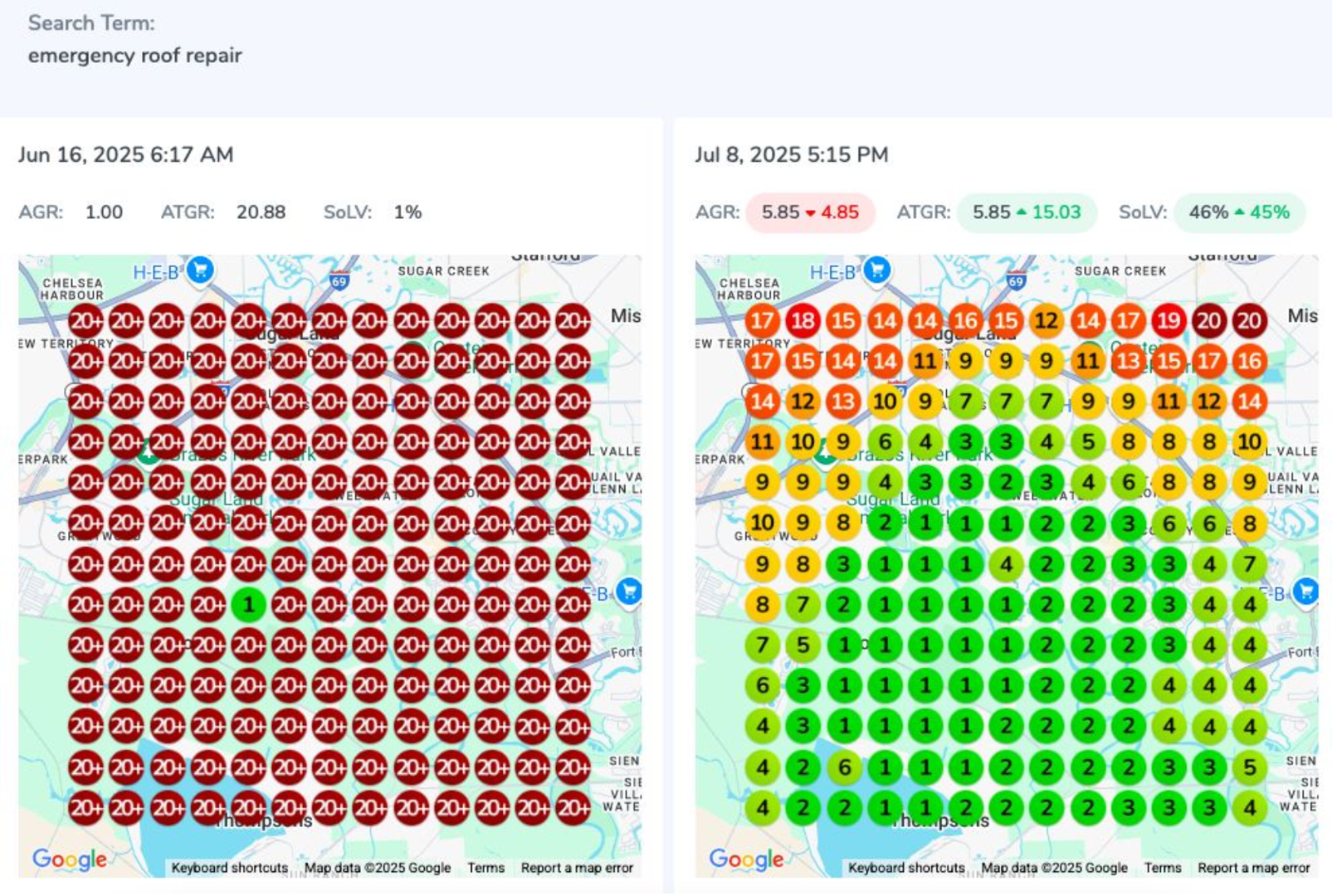
Now that you've mastered the Google Business Profile basics, it's time to take your local SEO game to the next level. The businesses that truly rank higher Google Maps understand something crucial: your Google Maps ranking isn't determined by your profile alone. It's the result of how well your entire digital presence works together - your website, your reputation across the web, and your connection to the local community.
Think of it this way: Google wants to show users the most relevant, trustworthy, and prominent businesses. While a well-optimized profile gets you in the game, these advanced strategies help you dominate it. But here's where many businesses stumble - they make critical mistakes that actually hurt their rankings. Common pitfalls include ignoring negative reviews , stuffing keywords into business descriptions until they sound robotic, and maintaining inconsistent NAP details across different platforms. These seemingly small oversights can derail months of optimization work.
Boost Your Website to Rank Higher on Google Maps
Your website isn't just a digital business card - it's a powerful ranking signal that Google uses to evaluate your business's prominence and relevance. When someone clicks through from your Google Maps listing to your website, that user experience directly impacts your local search performance.
Mobile-first optimization has become non-negotiable. With over 70% of local searches happening on mobile devices, your website needs to load quickly and function flawlessly on smartphones. Google's mobile-first indexing means they primarily use the mobile version of your site for ranking decisions. If your site takes forever to load or looks broken on a phone, you're essentially telling Google (and potential customers) that you don't take your business seriously.
Creating dedicated local landing pages is where many contractors miss huge opportunities. Instead of having one generic "services" page, smart businesses create specific pages for each city they serve. A page optimized for "roof repair in Cleveland" will always outrank a generic page when someone in Cleveland searches for roofing help. These pages should feel natural and helpful - include local landmarks, area-specific testimonials, and genuine insights about serving that community.
One surprisingly effective tactic is embedding a Google Map on your contact page . This simple step reinforces your location to Google's crawlers while making it easier for customers to find you. We've explored whether embedding a Google Map is an SEO superpower , and the results speak for themselves.
Local business schema markup might sound technical, but it's essentially a way to speak Google's language. This structured data tells Google exactly what information your website contains - your address, phone number, business hours, and even customer reviews. When Google can easily understand and trust your website data, you're more likely to appear in rich results and local search features.
Build Local Authority to Rank Higher on Google Maps
Building local authority is about proving to Google that your business is a legitimate, trusted part of your community. This goes beyond your website - it's about how your business appears across the entire web and how you engage with your local area.
Local citations and directory listings remain important, even as their direct ranking impact has evolved. A citation is simply any online mention of your business name, address, and phone number. While the quantity of citations matters less than it used to, having your business listed on major platforms like Yelp, Yellow Pages, and industry-specific directories still provides value. These listings create a web of trust signals that help Google verify your business's legitimacy.
NAP consistency across all platforms cannot be overstated. Google cross-references your business information across hundreds of sources. If your address shows up as "123 Main Street" on your website but "123 Main St." on your Yelp listing, it creates confusion. This level of precision might seem obsessive, but it's exactly this attention to detail that separates businesses that consistently rank higher Google Maps from those that struggle with visibility.
Local backlinks through partnerships and sponsorships offer a natural way to build authority while supporting your community. When the local Chamber of Commerce links to your website, or when a community blog mentions your recent charity work, these backlinks carry special weight because they're genuinely local and relevant. Consider sponsoring a local sports team, partnering with complementary businesses for referrals, or participating in community events - these activities often lead to valuable online mentions and links.
Engaging with your local community creates a positive cycle that benefits both your business and your search rankings. When you actively participate in local events, join business associations, or contribute to community discussions, you naturally earn mentions, reviews, and backlinks. These offline relationships translate into online authority signals that Google recognizes and rewards.
For roofing contractors specifically, this community engagement can be incredibly powerful. Storm damage creates urgent needs, and being known as the local roofing expert who sponsors the little league team or volunteers at community events can mean the difference between getting that emergency call or watching it go to a competitor. Our guide on how to dominate local search as a roofer dives deeper into these industry-specific strategies.
Frequently Asked Questions about Ranking Higher on Google Maps
Let's tackle the questions we hear most often from roofing contractors and service businesses who want to rank higher Google Maps . These are real concerns from real business owners who need practical answers.
How long does it take to see results from Google Maps SEO?
Here's the honest truth - there's no magic timeline that works for everyone. Your journey to rank higher Google Maps depends on several key factors that influence how quickly you'll see improvements.
The biggest factors affecting your timeline include how competitive your local market is, where you're starting from online, and how consistently you apply optimization strategies. If you're in a smaller town with fewer competitors, you might see movement faster than someone trying to break into a saturated metropolitan market.
Most businesses notice initial improvements within 30 to 90 days of consistent optimization efforts. But here's what "initial improvements" actually means - maybe you'll start appearing for searches you weren't showing up for before, or you'll move from position 8 to position 5 in the Map Pack.
For significant ranking improvements that truly move the needle for your business, plan on 6 to 12 months of dedicated effort. Sometimes it takes even longer, especially in highly competitive markets. Google values consistency and longevity - they want to see that you're actively maintaining your profile and genuinely serving your community over time.
The importance of consistency and ongoing optimization cannot be overstated. Google rewards businesses that regularly update their profiles, respond to reviews, and stay engaged with their customers. It's not a "set it and forget it" situation.
Do I need a physical storefront to rank on Google Maps?
This question comes up constantly, and I completely understand why contractors worry about it. The short answer is no - you absolutely do not need a physical storefront to rank higher Google Maps .
This is especially relevant for contractors and home service providers like roofers who work at customer locations rather than having customers visit their business. Google Business Profile specifically accommodates service-area businesses (SABs) through proper configuration options.
When setting up your profile, you can define your service areas while hiding your business address from public view. This means you'll appear for relevant searches throughout your service region without broadcasting your home office or warehouse location to the world.
The key is properly configuring your Google Business Profile as a service-area business. You'll set your service radius or specific service areas, and Google will show your business to potential customers within those boundaries. Many successful roofing contractors operate this way and achieve excellent Google Maps visibility.
Can I pay Google to rank higher in the organic Maps results?
This might be the most misunderstood aspect of Google Maps, so let me clear this up once and for all. You cannot pay Google to improve your position in the organic Google Maps results. Those rankings are determined by Google's algorithm based on relevance, distance, and prominence.
However, Google does offer paid advertising options that can increase your visibility, though these are separate from organic rankings. Google Maps Ads appear above the organic results and are clearly marked as "Ads." Local Service Ads, available for many contractor categories including roofing, appear at the very top of search results and operate on a pay-per-lead model.
While these paid options can provide immediate visibility and generate leads, they don't influence your organic Google Maps ranking. The businesses you see ranking organically in the Map Pack earned those positions through the optimization strategies we've discussed throughout this guide.
For long-term, cost-effective visibility that builds your business's authority and trustworthiness, focusing on organic local SEO strategies remains the most valuable investment you can make in your online presence.
Conclusion: Putting Your Business on the Local Map
Your journey to rank higher Google Maps doesn't end here - it's just beginning. Throughout this guide, we've walked through the essential building blocks that separate the businesses thriving at the top of the Map Pack from those struggling for visibility below.
The path is clear: master Google's three pillars of Relevance, Distance, and Prominence through a completely optimized Google Business Profile, harness the power of genuine customer reviews, and support it all with a mobile-friendly website and strong local authority signals. Each piece works together like a well-built roof - remove one component, and the whole structure becomes vulnerable.
What makes local SEO both challenging and rewarding is its continuous nature . Your Google Business Profile needs regular updates, new photos, and fresh posts. Customer reviews require ongoing encouragement and professional responses. Your website needs consistent improvements and location-specific content. Local authority grows through genuine community engagement and partnerships.
But here's the exciting part: businesses that commit to this ongoing process see real, measurable results. More phone calls from qualified prospects. Increased website traffic from people ready to buy. Higher visibility exactly when your ideal customers are searching for your services.
The contractors we work with often tell us the same thing - they wish they'd started focusing on local SEO sooner. The businesses ranking at the top today didn't get there overnight, but they did get there through consistent, strategic effort.
For roofing contractors and service businesses ready to dominate their local market, this is where CinchLocal's specialized approach makes the difference. Our "Roofer Footprint Expansion System" takes the guesswork out of local SEO, combining all these strategies into a proven system that guarantees increased Google Maps visibility and delivers pre-sold leads within 30 days.
Your customers are searching for you right now. The question isn't whether they'll find a contractor - it's whether they'll find your business when they need you most.
Want Us to Uncover Hidden 'Footprint Gaps' And Critical Blind Spots That’s Quietly Draining Calls, Jobs, and Profits?
Simply Fill Out The Form Below:
